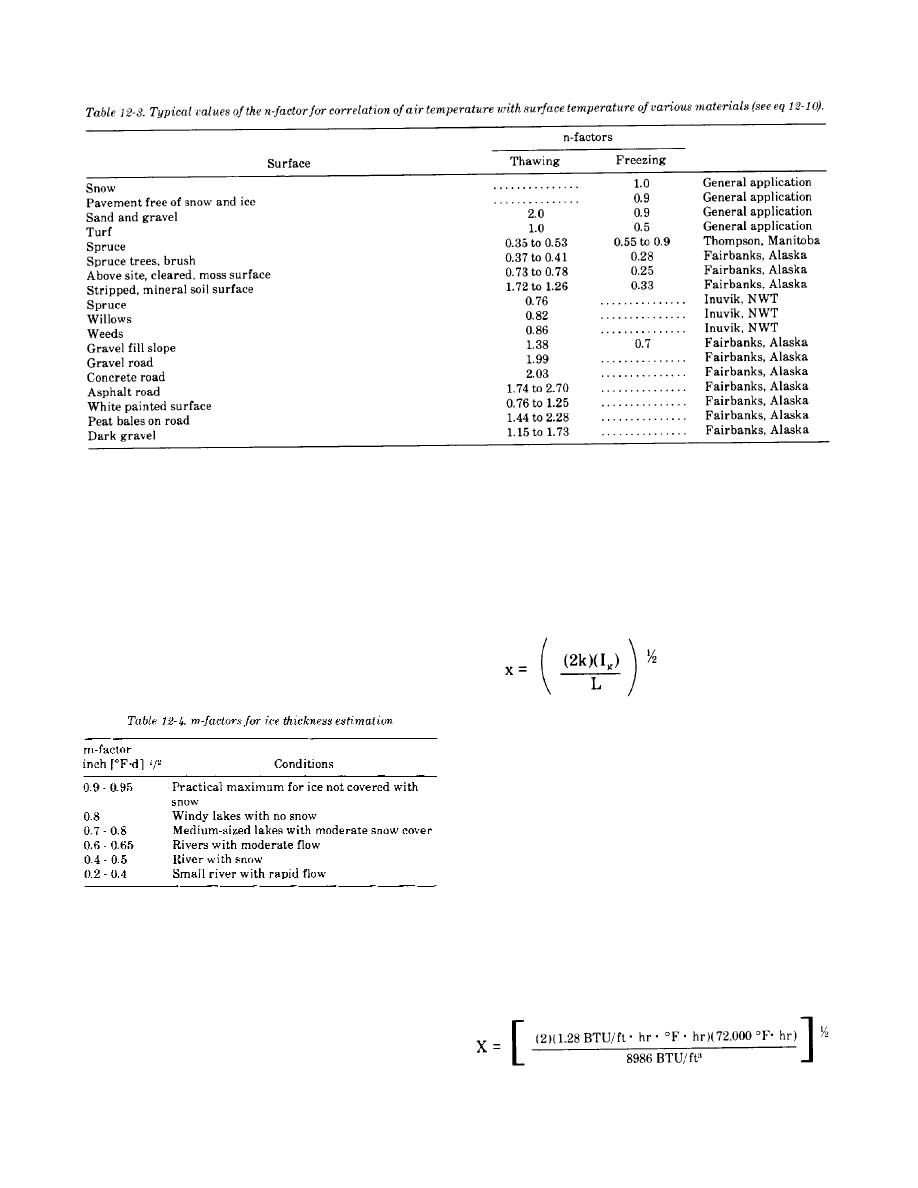
TM 5-852-5/AFR 88-19, Volume 5
--From table 12-4, m = 0.95 inch/(EF)(d)
(3) Ice thickness on water bodies can be esti-
mated from the previous depth of freezing equations
or from equations 12-3 with the m values in table
x = (0.95)(3000)
12-4 (see example 12-9a). Snow cover has a
= 52 inches
significant insulting effect and can significantly
= 4.33 feet.
reduce the maximum ice thickness (see example 12-
9b). The ice formation can be greater than calculted
--The Stefan equation (equation 12-4) can also be
if the weight of snow or the lowering of the water
used:
level causes cracks in the ice and water overflows
onto the surface. This water is drawn into the snow
and the mixture refreezes and bonds to the original
ice.
where
k = thermal conductivity of material above
the freezing isotherm, ice in this case, so
from table 12-2:
ice = 1.28 BTU/ft hr EF
k
L = volumetric latent heat of material
undergoing phase change, in this case
water, so:
Latent heat of water at 32EF =
12-9. Design examples.
144 BTU/lb
Eight typical examples are given below to illustrate
Density of water at 32EF = 62.4 lb/ft3
the utilization of the calculation procedures des-
L = (144 BTU/lb)(62.4 lb/ft3) =
cribed above.
8985.6 BTU/ft3
a. Estimate the practical maximum ice thickness
Ig = (3000EF d)(24 hr/day) = 72,000 EF hr
on a water reservoir with no snow cover when the
annual air freezing index (Ig) is 3000 EF d. Use
equation 12-3:
x = m(Ig)
= 4.5 ft.
12-16



 Previous Page
Previous Page
